Abstract
1 In helically-cut strips of dog coronary, superior mesenteric, right gastro-epiploic and renal arteries contracted with prostaglandin F2 alpha (PGF 2 alpha), histamine produced a dose-related relaxation, while, in contrast, the amine caused only a contraction of cerebral arterial strips. 2 The contractile response of cerebral arteries to histamine was attenuated by chlorpheniramine (10(-6)M) but was unaffected by cimetidine (10(-5)M). Relaxant responses to histamine of coronary and renal arteries were significantly attenuated by treatment with cimetidine and to a similar extent by combined treatment with cimetidine and chlorpheniramine. Chlorpheniramine alone was ineffective. 3 In mesenteric and gastro-epiploic arteries, relaxant responses to histamine were attenuated only slightly by cimetidine. Chlorpheniramine slowed the development of histamine-induced relaxations but did not alter the magnitude of the relaxations. Combined treatment with these H1- and H2- antagonists attenuated the histamine-induced relaxations to an appreciably greater extent than treatment with cimetidine alone. 4 It may be concluded that the cerebroarterial contraction induced by histamine is mediated through H1-receptors and the relaxations of coronary and renal arteries induced by histamine are mediated through H2-receptors. It appears that H1- and H2-receptors interact with each other to produce potentiation of histamine-induced relaxations of mesenteric and gastro-epiploic arteries.
Full text
PDF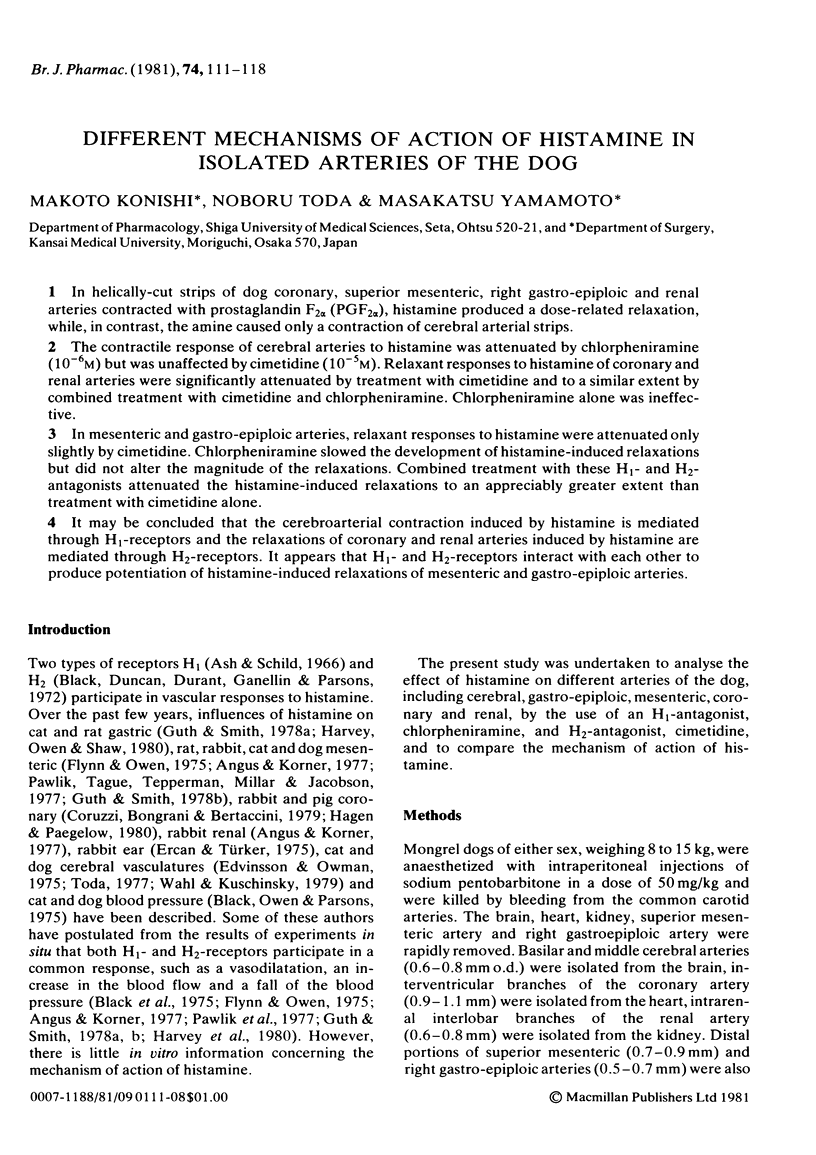
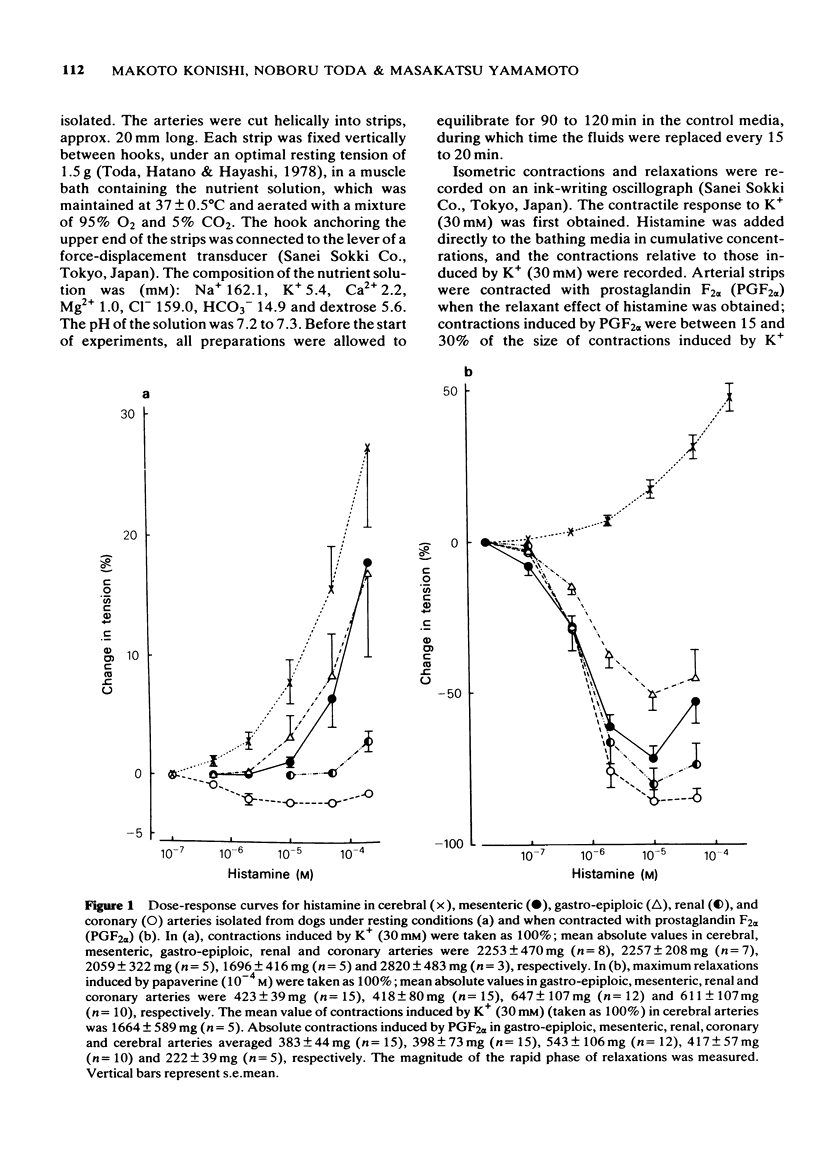
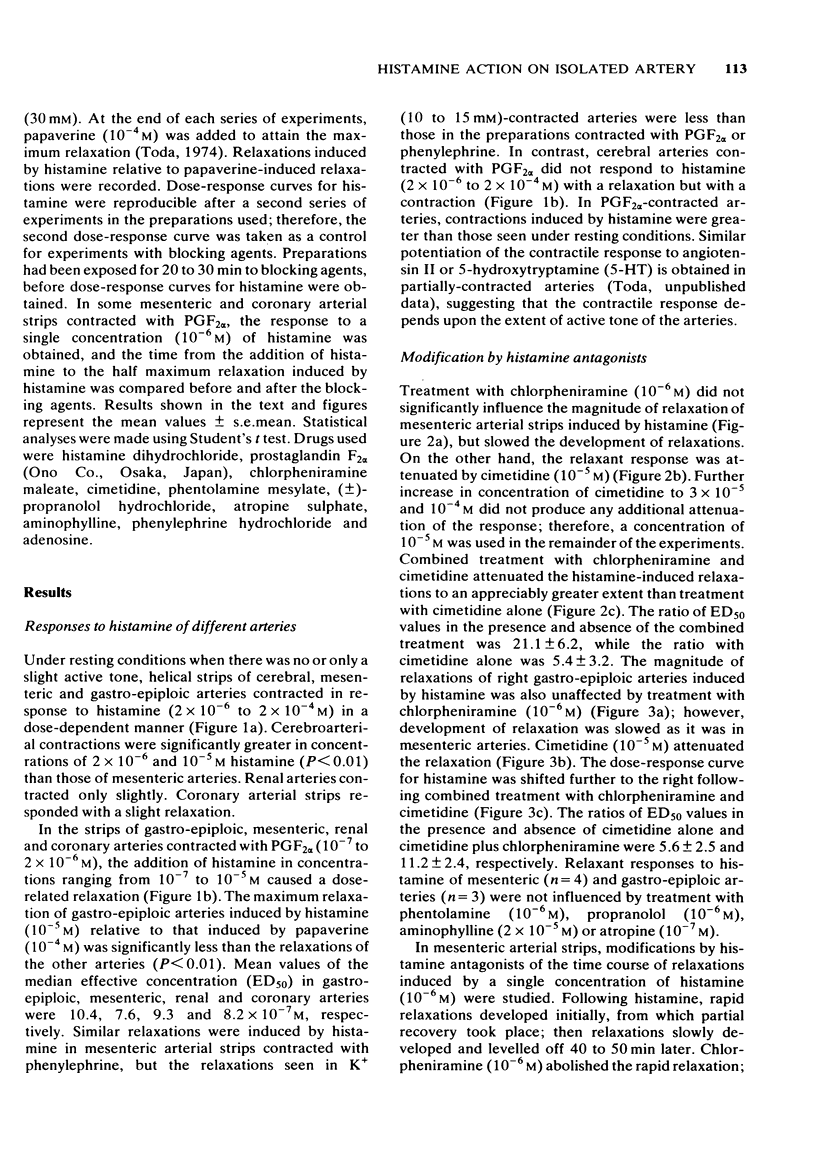
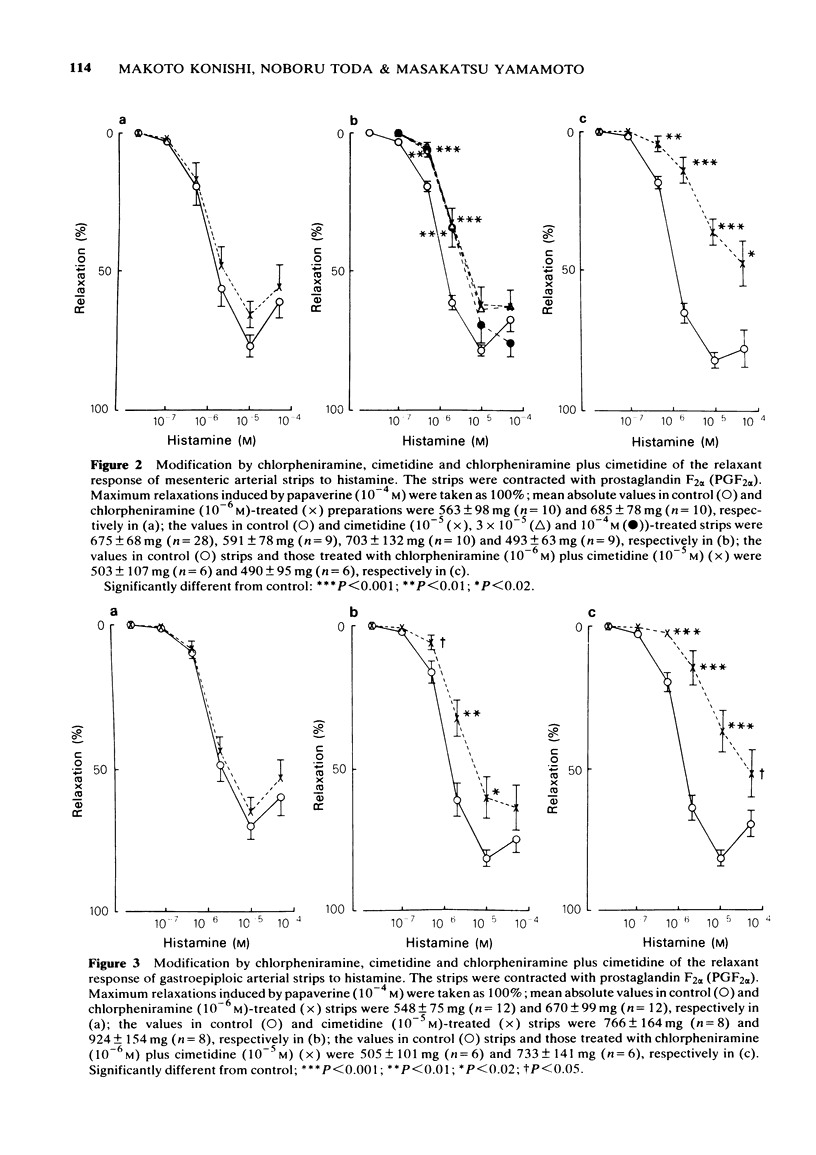
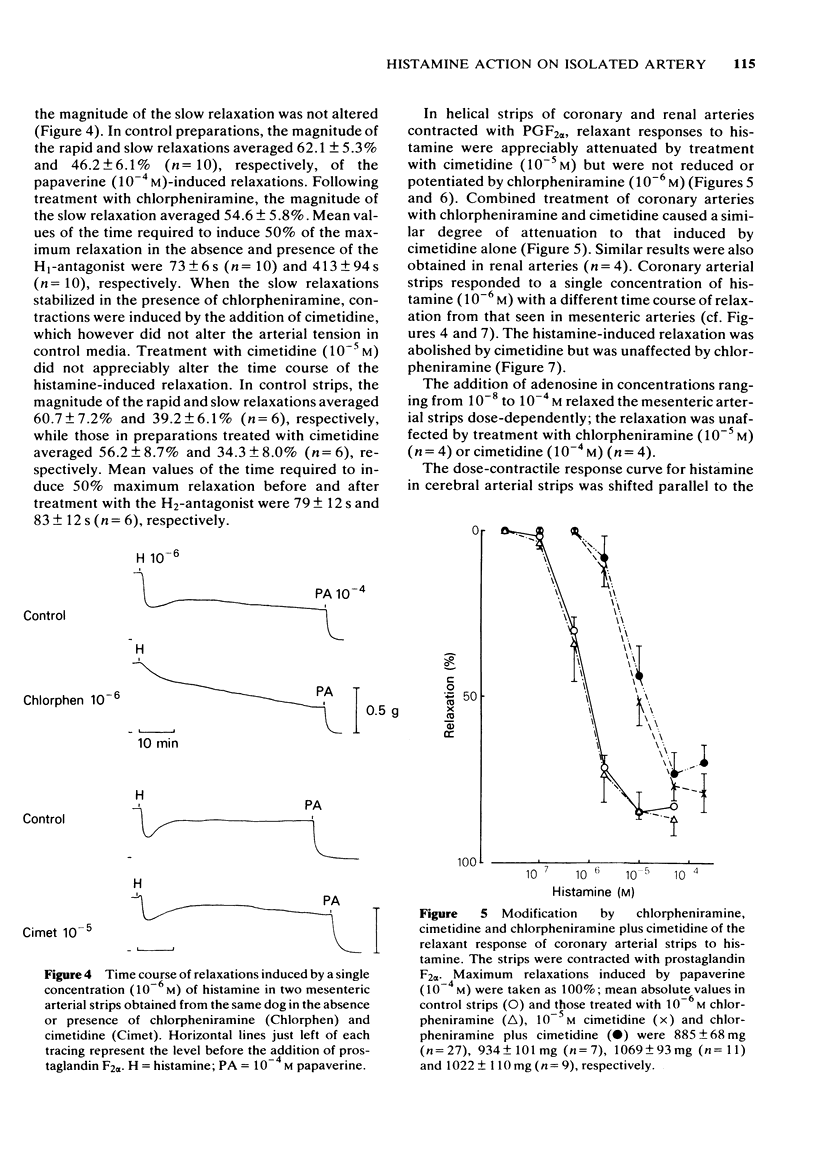
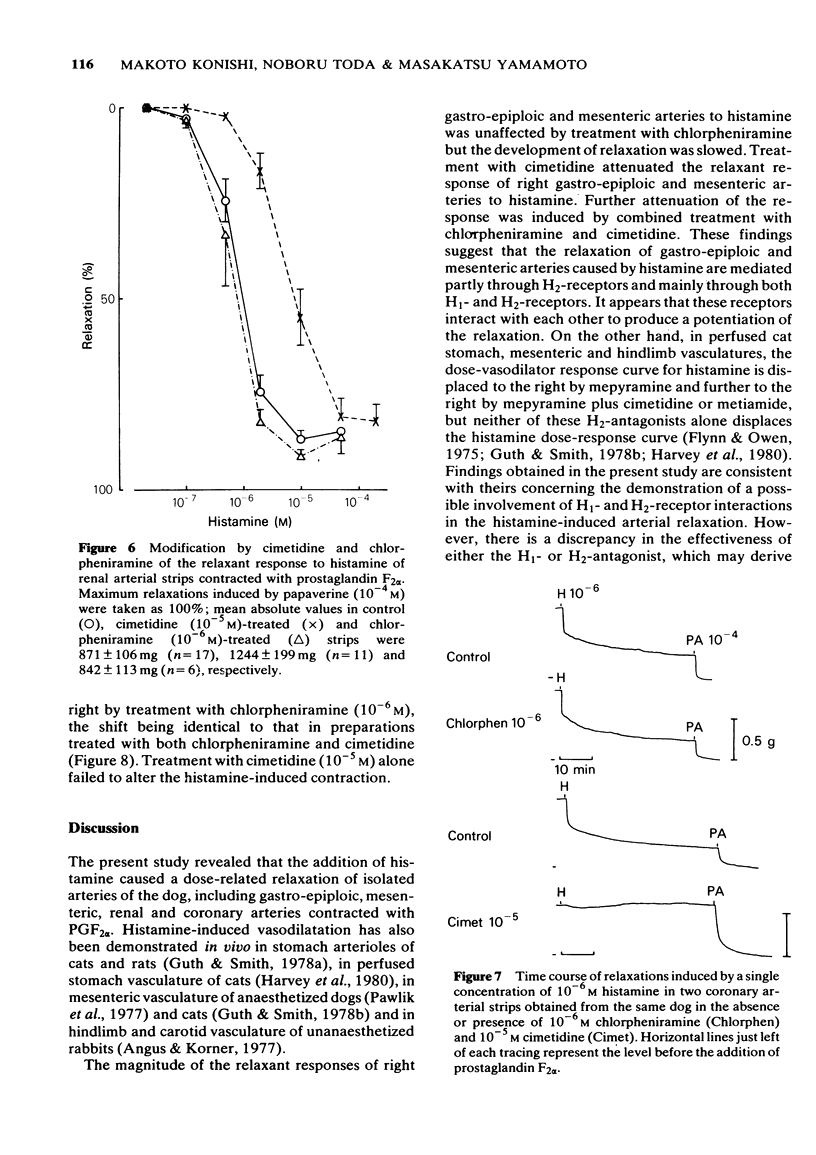
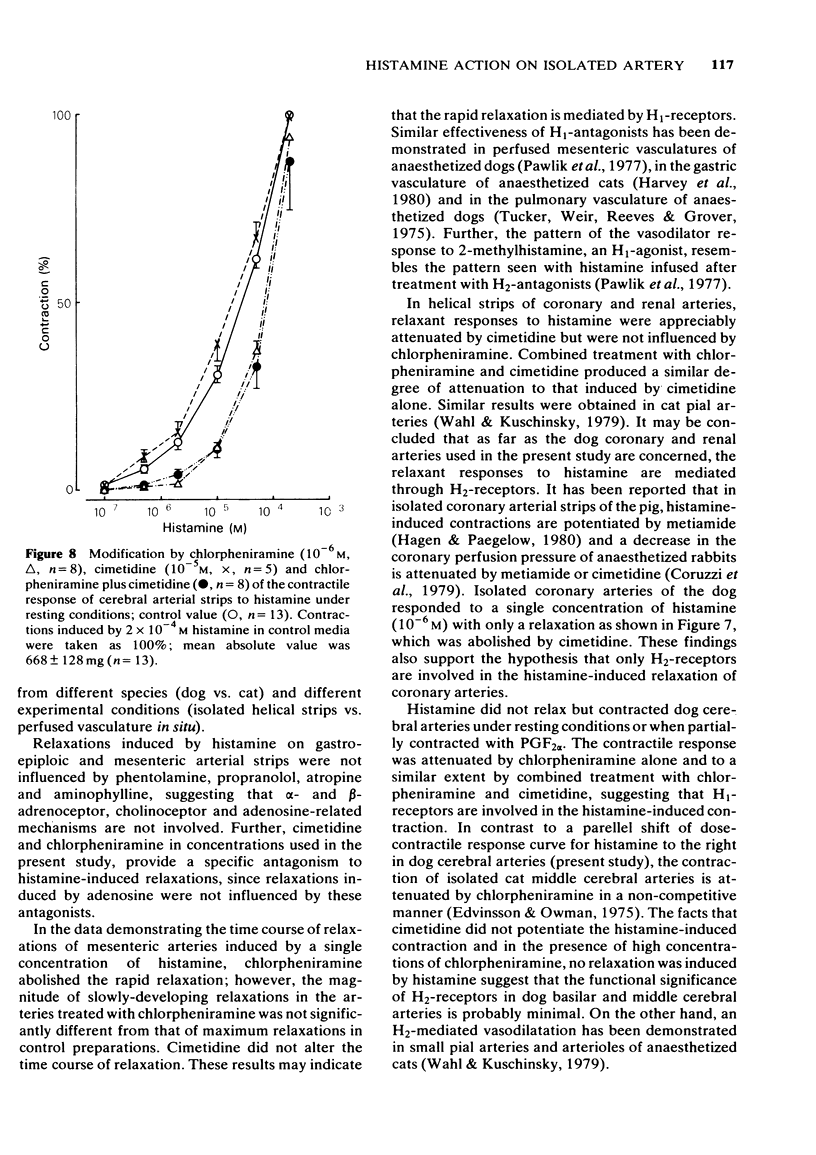
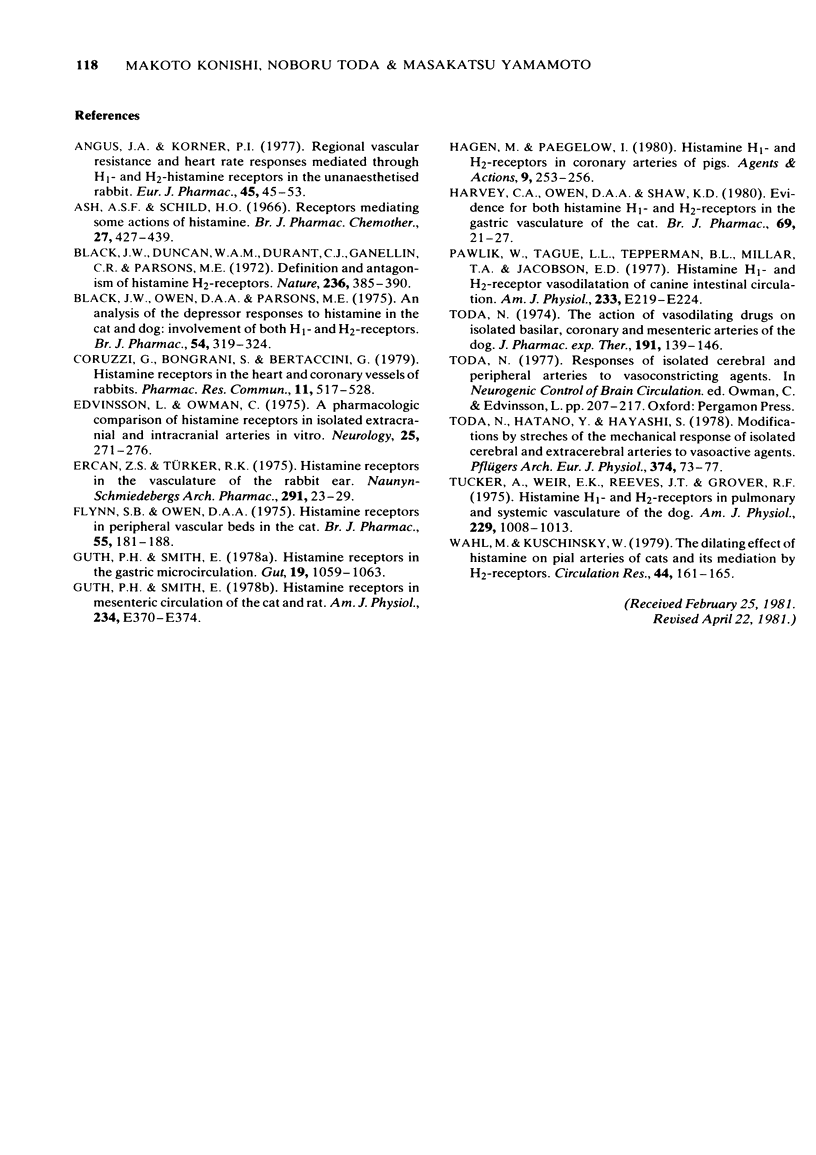
Selected References
These references are in PubMed. This may not be the complete list of references from this article.
- Angus J. A., Korner P. I. Regional vascular resistance and heart rate responses mediated through H1- and H2-histamine receptors in the unanaesthetised rabbit. Eur J Pharmacol. 1977 Sep 1;45(1):45–53. doi: 10.1016/0014-2999(77)90056-5. [DOI] [PubMed] [Google Scholar]
- Ash A. S., Schild H. O. Receptors mediating some actions of histamine. Br J Pharmacol Chemother. 1966 Aug;27(2):427–439. doi: 10.1111/j.1476-5381.1966.tb01674.x. [DOI] [PMC free article] [PubMed] [Google Scholar]
- Black J. W., Duncan W. A., Durant C. J., Ganellin C. R., Parsons E. M. Definition and antagonism of histamine H 2 -receptors. Nature. 1972 Apr 21;236(5347):385–390. doi: 10.1038/236385a0. [DOI] [PubMed] [Google Scholar]
- Black J. W., Owen D. A., Parsons M. E. An analysis of the depressor responses to histamine in the cat and dog: involvement of both H1- and H2-receptors. Br J Pharmacol. 1975 Jul;54(3):319–324. doi: 10.1111/j.1476-5381.1975.tb07571.x. [DOI] [PMC free article] [PubMed] [Google Scholar]
- Coruzzi G., Bongrani S., Bertaccini G. Histamine receptors in the heart and coronary vessels of rabbits. Pharmacol Res Commun. 1979 Jun;11(6):517–528. doi: 10.1016/s0031-6989(79)80024-7. [DOI] [PubMed] [Google Scholar]
- Edvinsson L., Owman C. A pharmacologic comparison of histamine receptors in isolated extracranial and intracranial arteries in vitro. Neurology. 1975 Mar;25(3):271–276. doi: 10.1212/wnl.25.3.271. [DOI] [PubMed] [Google Scholar]
- Ercan Z. S., Türker R. K. Histamine receptors in the vasculature of the rabbit ear. Naunyn Schmiedebergs Arch Pharmacol. 1975;291(1):23–29. doi: 10.1007/BF00510818. [DOI] [PubMed] [Google Scholar]
- Flynn S. B., Owen D. A. Histamine receptors in peripheral vascular beds in the cat. Br J Pharmacol. 1975 Oct;55(2):181–188. doi: 10.1111/j.1476-5381.1975.tb07627.x. [DOI] [PMC free article] [PubMed] [Google Scholar]
- Guth P. H., Smith E. Histamine receptors in mesenteric circulation of the cat and rat. Am J Physiol. 1978 Apr;234(4):E370–E374. doi: 10.1152/ajpendo.1978.234.4.E370. [DOI] [PubMed] [Google Scholar]
- Guth P. H., Smith E. Histamine receptors in the gastric microcirculation. Gut. 1978 Nov;19(11):1059–1063. doi: 10.1136/gut.19.11.1059. [DOI] [PMC free article] [PubMed] [Google Scholar]
- Hagen M., Paegelow I. Histamine H1-and H2-receptors in coronary arteries of pigs. Agents Actions. 1979 Aug;9(3):253–256. doi: 10.1007/BF01966697. [DOI] [PubMed] [Google Scholar]
- Harvey C. A., Owen D. A., Shaw K. D. Evidence for both histamine H1- and H2-receptors in the gastric vasculature of the cat. Br J Pharmacol. 1980 May;69(1):21–27. doi: 10.1111/j.1476-5381.1980.tb10878.x. [DOI] [PMC free article] [PubMed] [Google Scholar]
- Pawlik W., Tague L. L., Tepperman B. L., Miller T. A., Jacobson E. D. Histamine H1- and H2-receptor vasodilation of canine intestinal circulation. Am J Physiol. 1977 Sep;233(3):E219–E224. doi: 10.1152/ajpendo.1977.233.3.E219. [DOI] [PubMed] [Google Scholar]
- Toda N., Hatano Y., Hayashi S. Modifications by stretches of the mechanical response of isolated cerebral and extracerebral arteries to vasoactive agents. Pflugers Arch. 1978 Apr 25;374(1):73–77. doi: 10.1007/BF00585699. [DOI] [PubMed] [Google Scholar]
- Toda N. The action of vasodilating drugs on isolated basilar, coronary and mesenteric arteries of the dog. J Pharmacol Exp Ther. 1974 Oct;191(1):139–146. [PubMed] [Google Scholar]
- Tucker A., Weir E. K., Reeves J. T., Grover R. F. Histamine H1- and H2-receptors in pulmonary and systemic vasculature of the dog. Am J Physiol. 1975 Oct;229(4):1008–1013. doi: 10.1152/ajplegacy.1975.229.4.1008. [DOI] [PubMed] [Google Scholar]
- Wahl M., Kuschinsky W. The dilating effect of histamine on pial arteries of cats and its mediation by H2 receptors. Circ Res. 1979 Feb;44(2):161–165. doi: 10.1161/01.res.44.2.161. [DOI] [PubMed] [Google Scholar]


